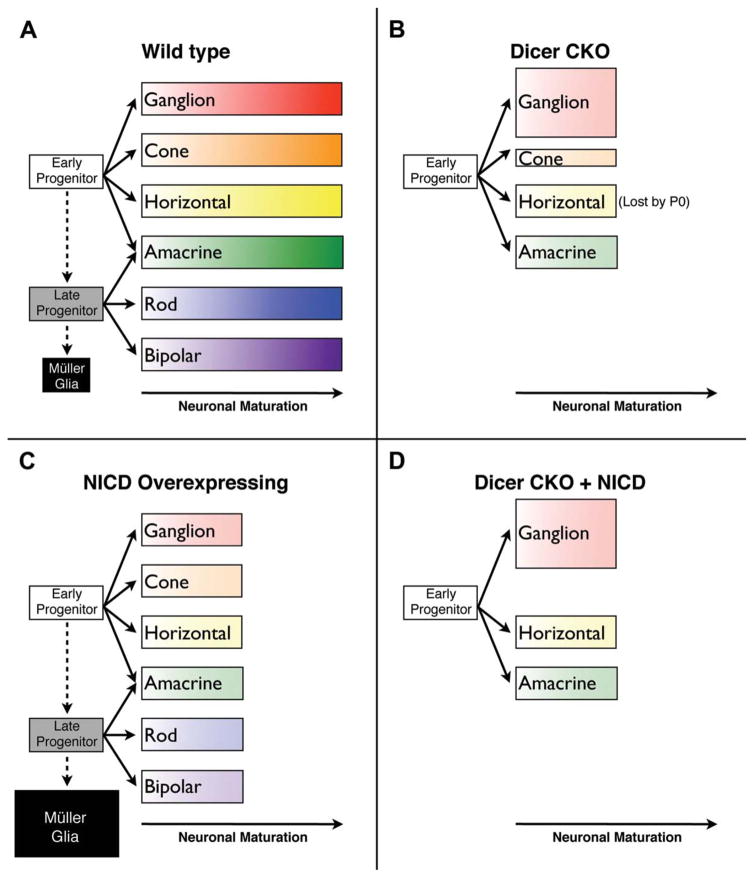Figure 7.
Summary of observed phenotypes. A, During normal retinal development, early progenitor cells give rise to ganglion, cone, horizontal, and amacrine cells, and transition to late progenitor cells which give rise to amacrine, rod, and bipolar cells. Remaining progenitor cells develop into Müller glial cells. B, In Dicer CKO retinas, late progenitor cells are lost, and no rod, bipolar, or Müller glial cells are generated. Instead, early progenitors persist, and generate an excess of ganglion cells, fewer cone photoreceptors, as well as horizontal and amacrine cells. However, none of these cell types fully mature or express mature markers, as indicated by shorter bars in the neuronal maturation axis. In addition, horizontal cells are completely lost by P0 (Georgi and Reh, 2010; Davis et al., 2011). C, In NICD overexpressing retinas, all neuronal types are formed, but they do not fully differentiate or express mature markers. In addition, an excess of Müller glia are generated. D, In Dicer CKO + NICD retinas, late progenitors and their postmitotic derivitives are still lost. In addition, ganglion cells are still generated in excess. Horizontal cells are now rescued postnatally, but no photoreceptors are generated. These cell types do not seem to fully differentiate or express mature markers. [Color figure can be viewed in the online issue, which is available at wileyonlinelibrary.com.]

